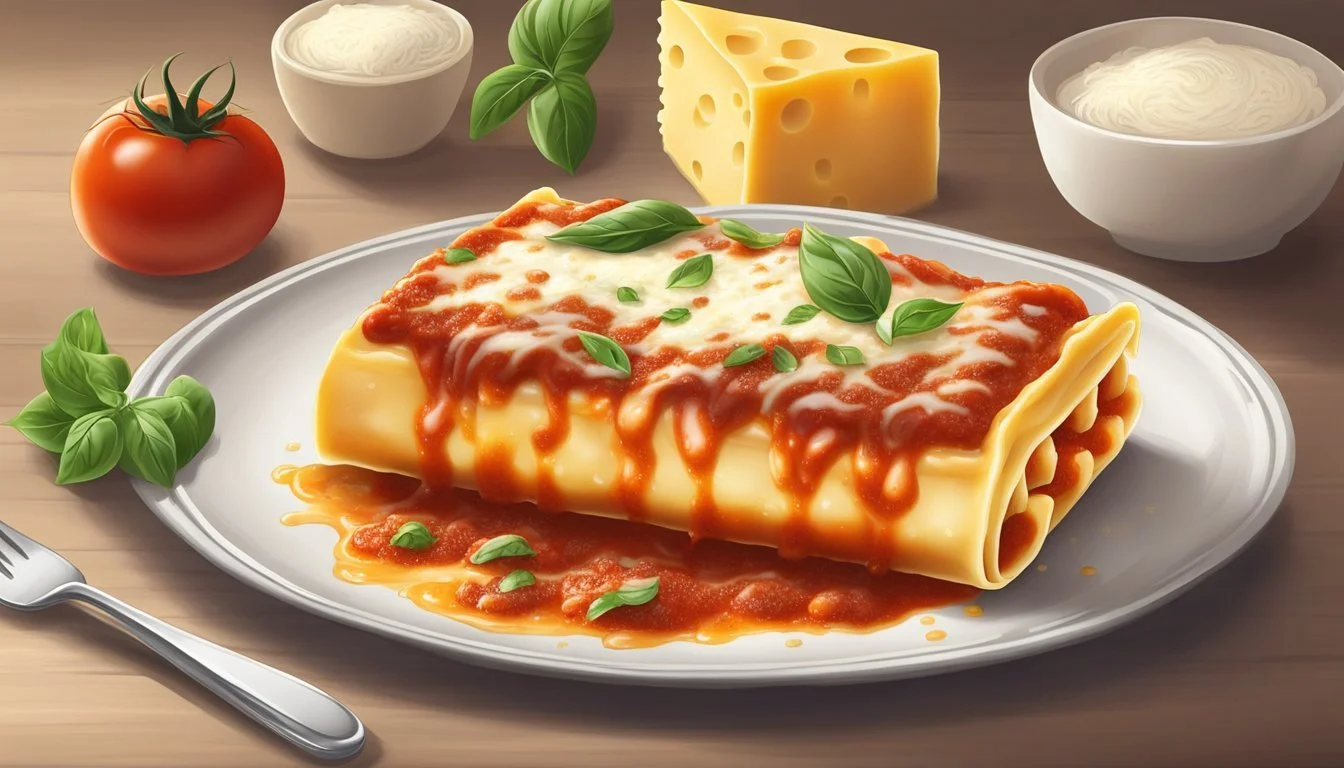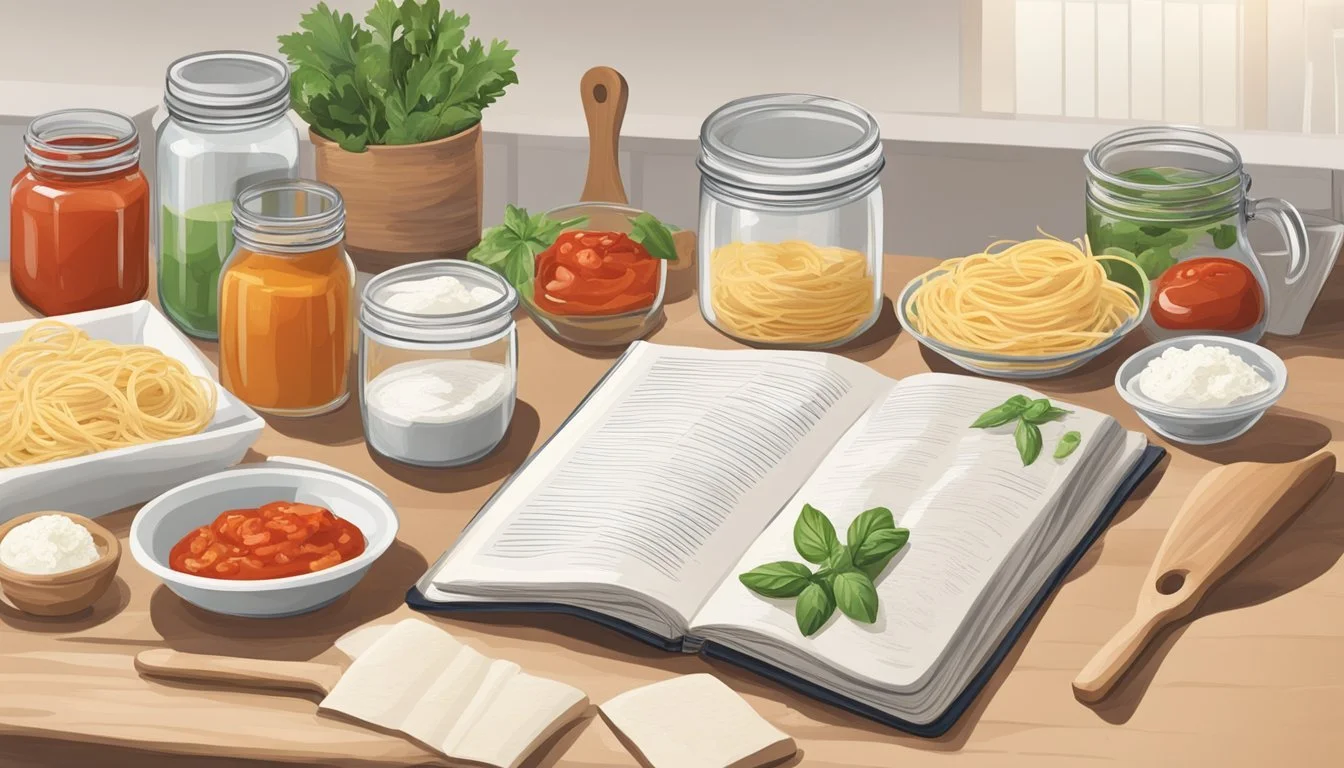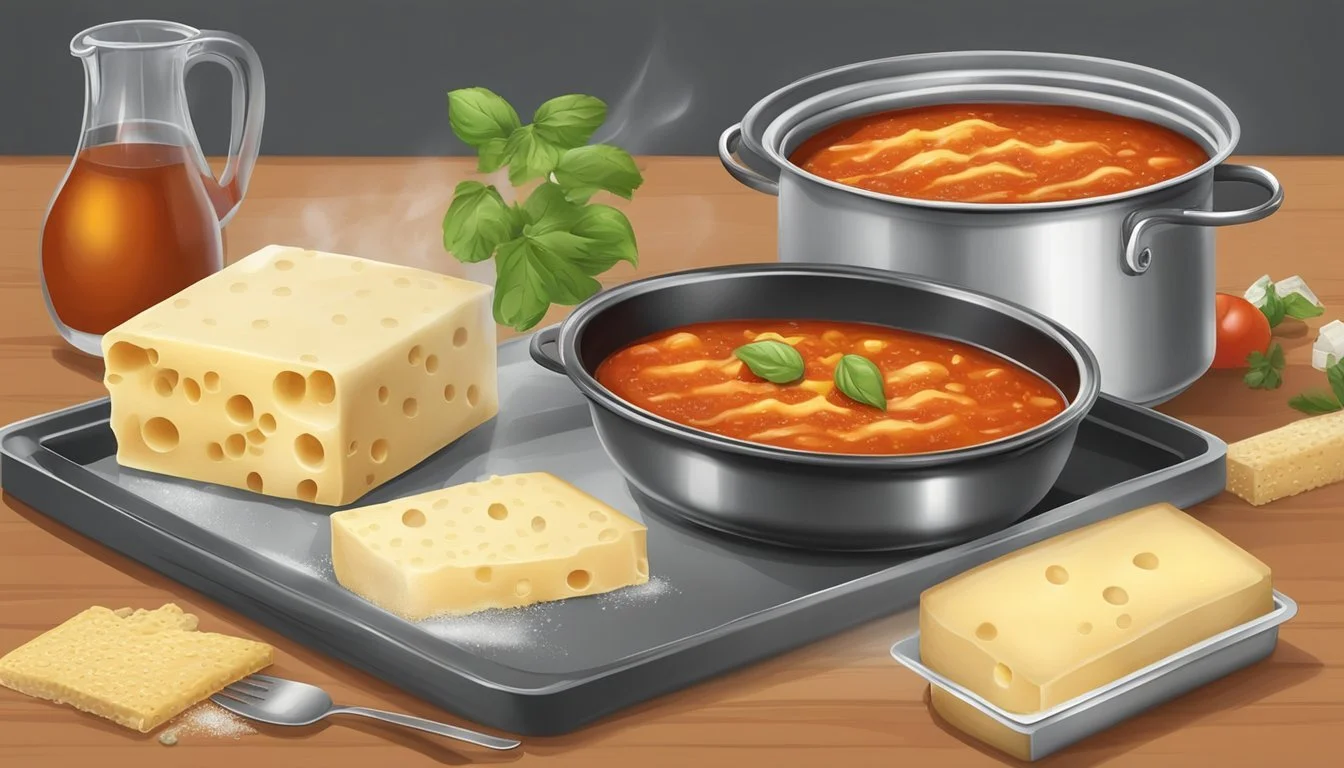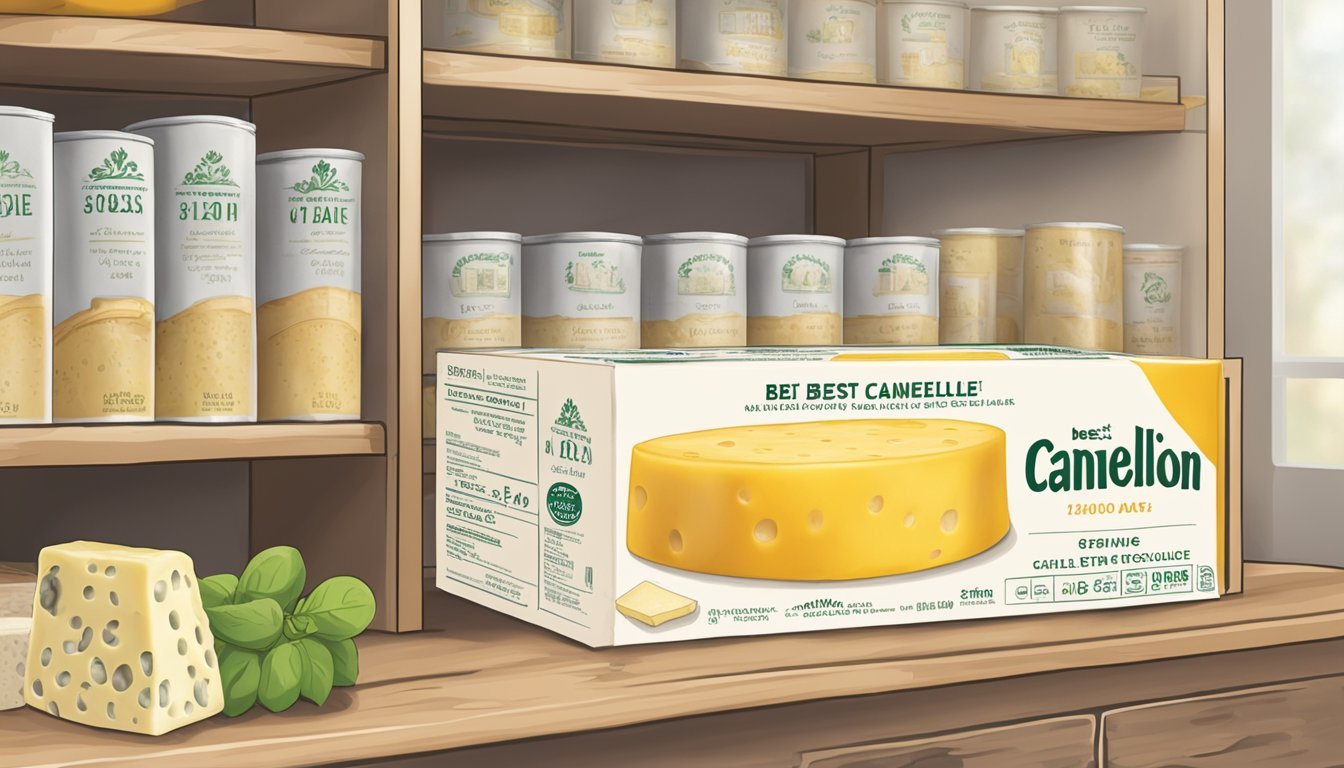How Long Do Cheese Cannelloni Last?
Storage Tips and Shelf Life
When it comes to savoring the rich and creamy delight of cheese cannelloni, understanding its shelf life can ensure both safety and flavor preservation. Freshly made cheese cannelloni, stuffed with a delicious blend of cheeses like Ricotta, can be stored in the refrigerator for 2-3 days when kept in an air-tight container. For those looking to extend its shelf life, freezing the cannelloni is a viable option, allowing it to last for several months.
Properly storing cheese cannelloni is crucial to maintaining its taste and texture. If the dish has already been baked, refrigerating it is key to keeping the ingredients fresh. Allowing it to cool to room temperature before refrigeration helps prevent any unwanted moisture build-up, which could impact the dish's quality. When stored well, baked cheese cannelloni can typically last up to 3-5 days in the fridge.
Freezing cheese cannelloni preserves it for much longer while maintaining most of its original flavor and texture. Whether frozen before or after baking, it is important to wrap the cannelloni securely to avoid freezer burn. A tightly sealed plastic bag or container will do the trick. With these tips in mind, you can enjoy the delectable flavors of cheese cannelloni even days after preparing it.
Understanding Cheese Cannelloni
Cheese Cannelloni is a popular Italian dish known for its creamy filling and rich flavors. It primarily features ingredients like ricotta, mozzarella, and parmesan cheese, often combined with spinach and wrapped in pasta shells.
Components and Variations
Cheese Cannelloni typically includes ricotta, mozzarella, and parmesan cheese as its primary ingredients. The filling may also contain spinach, egg, and various herbs such as parsley and basil. Fresh or pre-cooked pasta sheets are used to roll the filling into cylindrical shapes, which are then covered with marinara or other tomato-based sauces before baking.
Variations of cheese cannelloni can include different cheeses or the addition of ingredients like mushrooms, meat, or vegetables to the filling. Some recipes replace traditional pasta with alternatives like gluten-free pasta or whole-wheat pasta for dietary preferences.
Nutritional Profile
Cheese Cannelloni is rich in essential nutrients but also contains notable amounts of calories, fat, and sodium. A typical serving provides a good source of protein, calcium, vitamin A, and iron. However, it may also be high in saturated fat and cholesterol due to the cheeses and eggs used.
Here's a basic nutritional breakdown per serving:
Calories: ~400-500
Fat: ~20-25g (6-8g saturated fat)
Protein: ~15-20g
Carbohydrates: ~30-40g
Sodium: ~600-800mg
Fiber: ~2-4g
Sugar: ~4-6g
Calcium: ~25-30% DV
Vitamin A: ~30% DV
Vitamin C: ~10% DV
Iron: ~15% DV
This makes cheese cannelloni a satisfying dish, though mindful consumption is recommended due to its calorie and fat content.
Preparation and Ingredients
Preparing cheese cannelloni requires attention to both the ingredients and the method of assembly. Quality ingredients ensure rich flavor, while proper techniques make the process smoother and more efficient.
Selecting Quality Ingredients
For a flavorful cheese cannelloni, fresh and high-quality ingredients are essential. Ricotta cheese forms the base of the filling, providing a creamy texture and mild taste. Mixing in mozzarella cheese adds a stretchy, gooey element, while grated parmesan cheese offers a sharp, nutty flavor.
Fresh spinach should be cooked and finely chopped before adding to the mixture, providing color and nutrients. Seasonings like Italian seasoning, salt, black pepper, nutmeg, and oregano elevate the dish. Using fresh garlic and onion enriches the overall flavor profile.
For the pasta, cannelloni tubes or homemade crepes can be used. Fresh pasta tends to offer a more delicate texture but has a shorter shelf life. High-quality marinara sauce and a drizzle of olive oil complete the dish.
Homemade Cannelloni Creation
Creating homemade cheese cannelloni involves meticulous preparation. Start by preparing the filling: mix ricotta cheese, mozzarella cheese, parmesan cheese, cooked spinach, egg, salt, pepper, garlic, and seasonings in a large bowl until fully combined.
Next, cook the cannelloni tubes or prepare the crepes if opting for a variation. Use a piping bag or spoon to fill each pasta tube with the cheese mixture.
In a baking dish, spread a layer of marinara sauce, place the filled cannelloni evenly, and top with more marinara sauce. Drizzle with olive oil and sprinkle extra mozzarella and parmesan cheese on top. Bake until the pasta is tender and the cheese is bubbly and golden.
Cooking Procedure
Cheese cannelloni preparation involves assembling the components and perfect baking techniques. Both steps are crucial for achieving a delicious and well-cooked meal.
Assembling Cheese Cannelloni
Begin by preparing the filling. Mix ricotta cheese, chopped spinach, Parmesan cheese, egg, and a variety of seasonings such as salt, parsley, basil, oregano, and pepper in a bowl.
Use a piping bag or a large zippered bag with a snipped corner to fill the pasta tubes efficiently.
Fresh lasagna sheets can be rolled around the filling if manicotti or oven-ready cannelloni tubes are not available.
Spread a layer of marinara sauce, diluted with a small amount of water, at the bottom of a 9x13 casserole dish or baking pan.
Place the filled cannelloni on top of the sauce in a single layer.
Baking Techniques
Preheat the oven to 350°F (175°C). Spoon more marinara sauce over the filled cannelloni, ensuring they are well-coated.
Cover the baking dish with aluminum foil to retain moisture during baking.
Bake in the preheated oven for 40-50 minutes.
For a browned crust, remove the foil during the last 10 minutes of baking.
Allow the dish to cool for a few minutes after removing it from the oven.
Garnish with fresh herbs like basil or parsley if desired.
When using frozen cannelloni or cooking directly from a frozen state, adjust the baking time accordingly, maintaining the same temperature.
Storage and Shelf Life
Proper storage of cheese cannelloni is essential to maintain its freshness and safety. This section discusses refrigeration and freezing methods, crucial for extending the shelf life of this delightful dish.
Refrigeration Guidelines
Store fresh, uncooked cheese cannelloni in the refrigerator. It should be placed in an airtight container to prevent drying out and absorbing other odors. Fresh, uncooked cannelloni typically lasts 2-4 days in the refrigerator.
For cooked cannelloni, ensure it is cooled before storing. Place it in an airtight container to maintain its quality. Cooked cheese cannelloni can last 3-5 days in the refrigerator.
Monitor the temperature of the fridge, keeping it at or below 40°F (4°C) to maintain optimal food safety.
Freezing and Thawing
To extend the shelf life, freeze cheese cannelloni. Use a freezer-safe, airtight container or heavy-duty freezer bag to avoid freezer burn. Properly stored, cheese cannelloni lasts up to 3 months in the freezer.
For best results, thaw frozen cannelloni in the refrigerator for about 24 hours before reheating. This ensures even thawing and prevents bacterial growth.
If pressed for time, cheese cannelloni can be cooked directly from frozen. Adjust the total cooking time, allowing an additional 10-15 minutes to ensure thorough heating.
Serving Suggestions
Cheese cannelloni can be elevated with the right accompaniments and presentation. These additions and techniques will enhance the dining experience and make the dish a standout at any meal.
Accompaniments
Cheese cannelloni pairs wonderfully with various side dishes that can complement its rich and creamy texture. A classic Caesar salad adds a crisp, refreshing contrast. The crunchy romaine lettuce, tangy Caesar dressing, and grated Parmesan cheese offer a delightful balance.
For a heartier meal, garlic bread is a staple that not only complements the flavors but also serves as a great tool for soaking up any leftover sauce.
Vegetable sides like roasted vegetables or a simple sautéed spinach contribute fresh flavors and added nutrition. These sides ensure that the meal remains balanced and satisfying without being overly heavy.
Additionally, pairing with other main dishes such as chicken lasagna or lasagna roll ups can create a more substantial Italian feast if feeding a larger group.
Presentation Tips
Presentation is key to making cannelloni look as good as it tastes. Start by layering a base of marinara sauce on a large, clean white plate. Place three to four cannelloni pieces in the center.
Sprinkle with shredded mozzarella cheese and Parmesan cheese for garnish.
Add a few fresh basil leaves for a pop of color and a hint of freshness. Serve each plate with a slice of garlic bread neatly placed on the side.
For a more dramatic presentation, consider garnishing with a drizzle of balsamic reduction or a light sprinkle of chili flakes to add a bit of flair and spice. These small touches can make the dish visually appealing and appetizing, ensuring your guests' first bite is as enjoyable as the last.
Additional Variations and Ideas
Cheese cannelloni can be customized in numerous ways to suit different tastes and dietary preferences. Experimenting with alternative fillings and sauces or finding creative uses for leftovers can make this classic dish even more versatile.
Alternative Fillings and Sauces
While traditional cheese cannelloni features a mix of ricotta, spinach, and marinara sauce, many other delicious variations exist.
For meat lovers, incorporating sausage, ground beef, or chopped chicken can add protein and richness. Alternatively, a vegetable-based filling made with spinach, mushrooms, or zucchini can provide a tasty, lighter option.
Sauce variations are another way to elevate your dish. Instead of the standard marinara, consider trying a creamy Alfredo sauce or a tomato-based red sauce with extra herbs.
Adding a splash of broth to your sauce can enhance its flavor. Experiment with blending canned tomatoes, fresh basil, and even roasted bell peppers for unique marinara twists.
Creative Leftover Ideas
Leftover cheese cannelloni doesn’t have to be boring.
One easy option is to transform them into a casserole by chopping up the leftover cannelloni and mixing them with additional red sauce, cheese, and any remaining vegetables.
Another idea is to create stuffed pasta shells using the leftover filling, placing them in a baking dish with pasta sauce.
For a different texture, try slicing the cannelloni and using it in a pasta bake with breadcrumbs on top for a crunchy finish. Additionally, serving leftover pieces in a broth-based soup can offer a comforting twist.
Using leftovers creatively not only prevents waste but also provides an opportunity to enjoy the dish in new and exciting ways.
Health and Allergy Considerations
When consuming cheese cannelloni, it is essential to be aware of potential health and allergy considerations.
Nutrition Information: Cheese cannelloni is often rich in calories, fat, and cholesterol. One serving can contain approximately 350-500 calories, depending on portion size and ingredients.
Fat and Cholesterol: Cheese, a primary ingredient, adds to the dish's fat content, particularly saturated fat, and cholesterol. Those managing cholesterol levels need to be cautious.
Sodium and Potassium: Cheese cannelloni can be high in sodium due to added salt and cheese. It is important to check nutritional labels.
Allergens: Common allergens in cheese cannelloni include dairy, gluten (from pasta), and eggs. Ensure all ingredients are checked if there are known allergies.
Children: Cheese cannelloni can be nutritious, but moderation is key to avoid excessive intake of fat and sodium.
Dietary Considerations:
Vegetarians: Cheese cannelloni is suitable for vegetarians if no meat-based sauces or fillings are used.
Lactose Intolerance: Alternative ingredients like lactose-free cheese can be used.
Gluten-Free: Consider gluten-free pasta options if there are gluten sensitivities.
Storage and Safety: Store in an airtight container in the fridge and consume within 3-5 days. Proper storage reduces the risk of spoilage and foodborne illnesses.
Health-conscious individuals and those with allergies should carefully select and prepare ingredients to ensure the dish suits their dietary needs.









